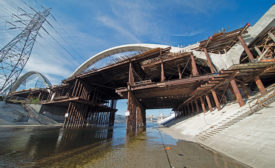Home » seismic design
Articles Tagged with ''seismic design''
In Earthquakes' Aftermath in Turkey and Syria, Evaluating Buildings and a Search for Survivors
Damage across southern Turkey and northern Syria is still being catalogued
Read More
Environment
Study: Soil Microbes Can Help Stabilize Buildings in Earthquakes
Findings suggest a process using bacteria could be less carbon-intensive than traditional approaches
Read More
Research
Steel Diaphragm Innovation Initiative Improves Seismic Design Tools
Researchers pave the way for future explorations that could speed up construction of steel frames
Read More
The latest news and information
#1 Source for Construction News, Data, Rankings, Analysis, and Commentary
JOIN ENR UNLIMITEDCopyright ©2024. All Rights Reserved BNP Media.
Design, CMS, Hosting & Web Development :: ePublishing
















